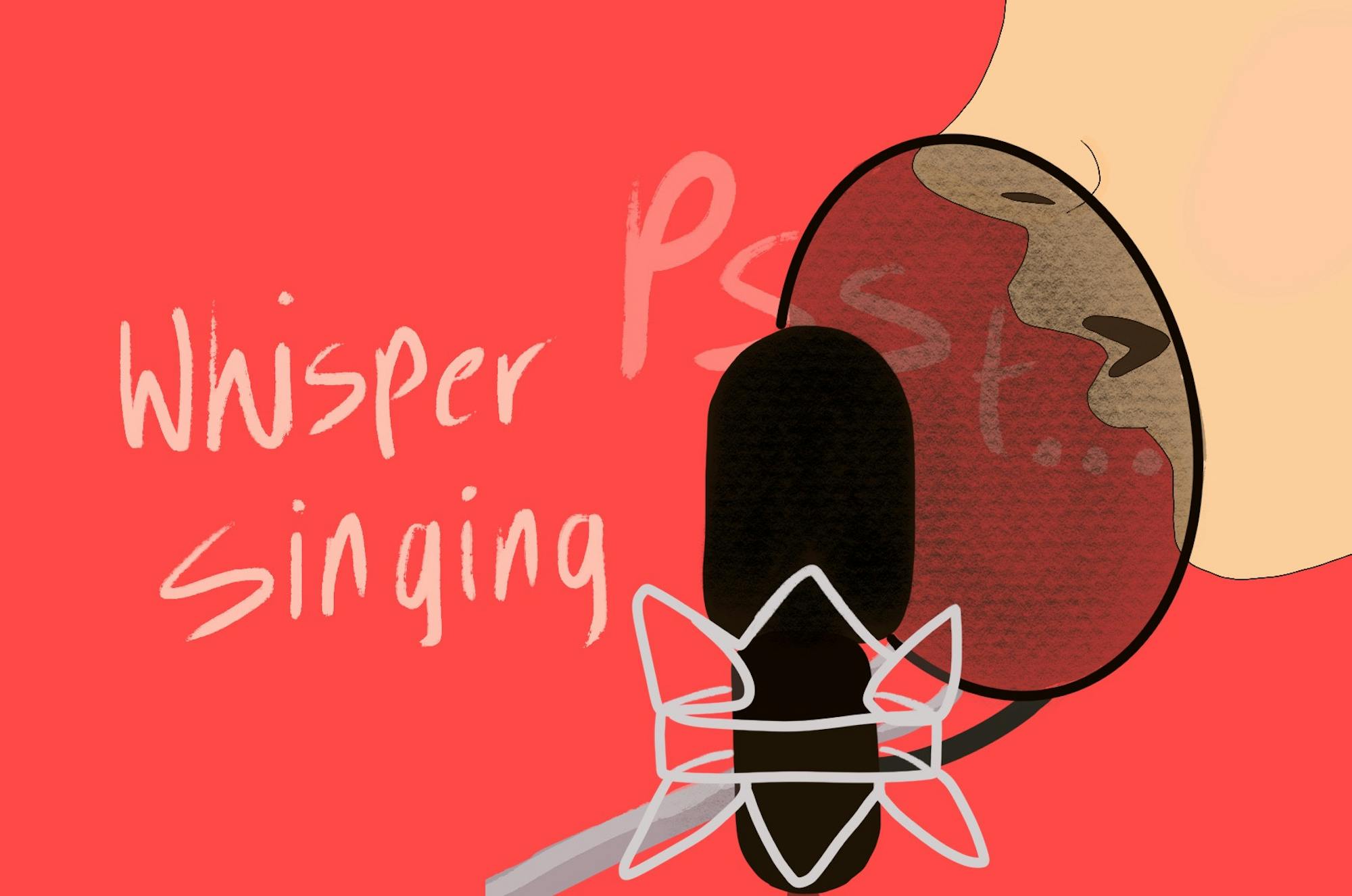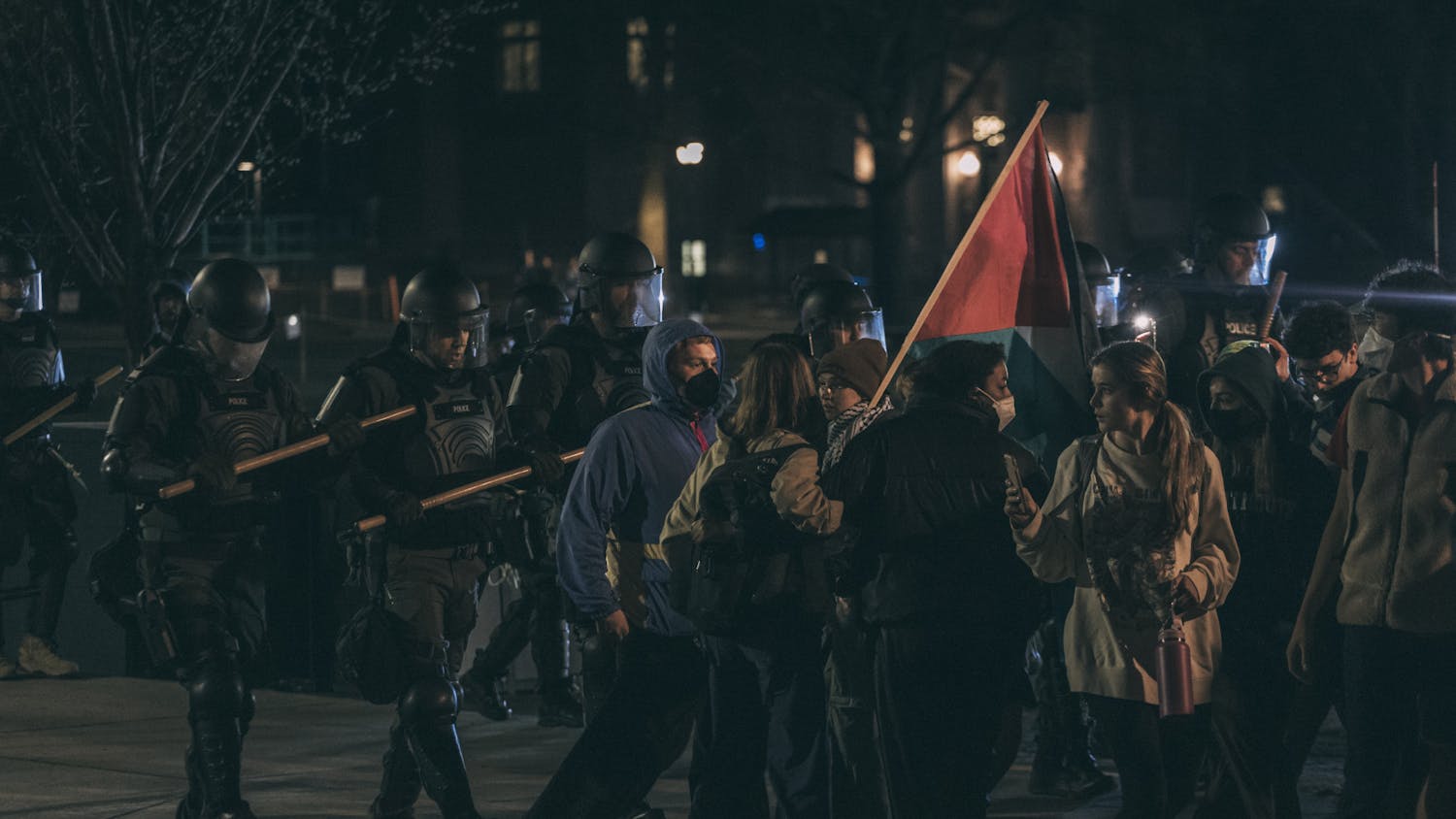While there has always been a variety of vocal styles present within pop, each generation has a defining vocal style. If there is a singing style that uniquely defines this current generation of pop stars, it would be the ethereal whisper singing style that has gained traction over the past 10 years.
In the 1950s, the defining style was crooning, characterized by its smooth, emotive and controlled vocal delivery, and popularized by artists including Frank Sinatra and Nat King Cole. Their voices resonated with the post-war optimism of the era, and the microphone technology of the time allowed for intimate, nuanced performances.
As decades passed, pop music saw the rise of belting, vocal gymnastics and dramatic performances. 80s icons like Michael Jackson and Whitney Houston performed powerfully with their upper registers, and 90s icons like Celine Dion belted operatically.
Today's popular whispering singing style — coined as “whisperpop” by Peter Robinson in the Guardian — championed by artists such as Billie Eilish, offers an intimate contrast to the powerful vocal deliveries of the past. This style, with its soft and almost spoken-word quality, resonates with contemporary listeners seeking authenticity and vulnerability in an age where a lot of pop suffers from soulless overproduction.
What defines the whisperpop style is an emphasis on breaths and sibilant consonants like P’s, K’s and T’s. Since sibilant consonants are most emphasized while whispering, this gives the sound a sense of physical proximity to the listener. The whisperpop style typically leaves in breaths and audible nonvocal mouth noises like the smacking of lips. These subtle cues preserve the authenticity and realism of the voice. Additionally, whispering can be an auditory trigger for an ASMR (autonomous sensory meridian response) sensation of tingling. This gives whispery vocals a unique, pleasurable quality. This feature of whisperpop is particularly modish because ASMR has become popular on Youtube and social media platforms like TikTok over the past few years.
The emergence of the whisperpop style can be traced to the popularity of singer-songwriters like Lana Del Rey in the early 2010s. Although she is far from the only singer to embrace a dark, subtle vocal delivery, Del Rey scored mainstream success with her 2012 album “Born to Die,” where she sings with a light, airy tone with defined breaths that imprints her vocal performance with profound intimacy.
Lorde’s 2013 breakout hit “Royals” was a major inflection point for pop, revitalizing a minimal compositional style of stripped-back percussion and dry airy vocals. “Royals” was a total reversal of the predominant pop style of maximal synths, wide auto-tuned vocals and clubby drums. The sparse composition on “Royals” allows Lorde’s soft, sibilant voice to shine through. Lorde would inspire a whole generation of indie singer-songwriters to sing with a soft, acoustic style rather than the typical wide and grandiose pop star delivery.
One singer blatantly influenced by Lorde is Selena Gomez, who switched from a high-energy, club-friendly album “Stars Dance” in 2013 to a sparser, percussion and vocal-forward record “Revival” in 2015. “Hands to Myself” is a quintessential example of a pop record that emphasizes a soft, breathy vocal singing style.
A defining album for whisperpop is Billie Eilish’s debut 2019 album “WHEN WE ALL FALL ASLEEP, WHERE DO WE GO?,” in which Eilish frequently employs a hauntingly thin and intimate whispering singing style, especially on songs like “i love you” and “listen before i go.” This singing style is especially effective at creating an intimate space when listening with headphones or wireless earbuds, which became very popular at that time. The production on the album also uses lots of repetitive samples paired with minimal drums, acoustic riffs and dramatic instrument panning to create a claustrophobic audio space that entrances the listener. Eilish would go on to sweep with Grammys in 2020, winning each of the four biggest categories: Best New Artist, Song of The Year, Record of The Year and Album of the Year. This cemented the mainstream success of a style that was unlike typical pop conventions. Eilish remains a popular artist today despite her unorthodox style, again scoring success with her sophomore record “Happier Than Ever” in 2021 and the downtempo ballad “What Was I Made For?” in 2023.
Whisperpop is closely related and sometimes interchangeable with the nascent bedroom pop genre, which doubles down on the intimate and emotive aesthetic of whispery vocals using the abstraction of the bedroom as a vulnerable and acoustic space. The term bedroom pop first emerged in the mid 2010s as a way to reference artists who had gained small followings online and had DIY production that would be considered “lo-fi” compared to major label releases. By early 2018, Spotify curated its own bedroom pop playlist, featuring artists like FKA twigs, Clairo, beabadoobee, Soccer Mommy and Rocco. Some of these artists have found mainstream success, but most of these are indie artists first and foremost, unlike Billie Eilish who has embraced and redefined her pop star status. Therefore, whisperpop can be considered the pop style derived from and parallel to bedroom pop.
The popularity of whisperpop is due to its ability to create a genuinely intimate space for the listener, which contrasts it from the overproduction and sterilization of a lot of pop music. The sibilance of whispery vocals and transparent breaths preserve a sense of realism that keep the vocals sounding acoustic. Of course, this does not necessarily mean that the vocals are not processed at all, but the intentionality is to preserve the intimate and imperfect nature of the human voice. While Adele’s operatic singing is impressively theatrical and technical, Billie Eilish’s whispery singing is raw and emotive — it is relatable precisely because it is imperfect and down-to-earth.
Taylor Swift’s “1989,” which originally came out in 2014, was re-recorded and released last week. Although subtle, comparing both albums reveals that the processing on Taylor’s vocals is more transparent and sibilant now, reflecting industry trends over the past nine years and the influence of Jack Antonoff’s production. Even more indicative is how Taylor’s vocal style shifted from the bombastic theatricalism of “reputation” in 2017 and “Lover” in 2019 to her subdued, folksy singer-songwriter vocal style on “folklore” and “evermore” in 2020, very clearly harkening back to her country roots and inspired by Lana Del Rey’s aesthetic. Singing styles come in and out of fashion, but it’s safe to say that for now, whisperpop is here to stay.




